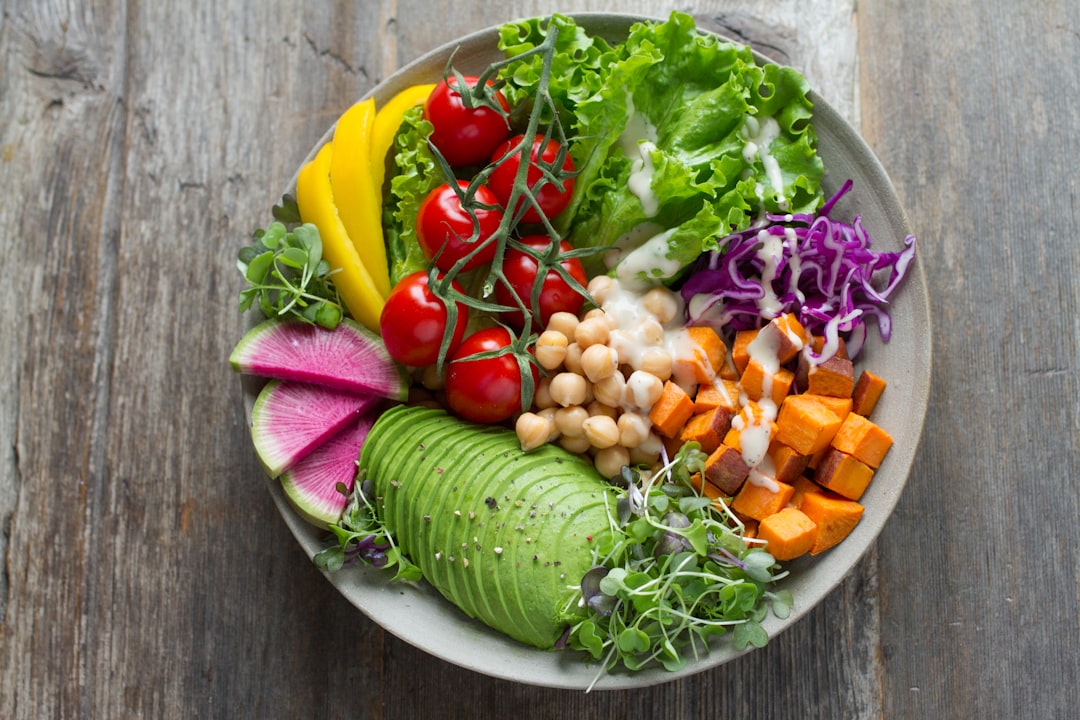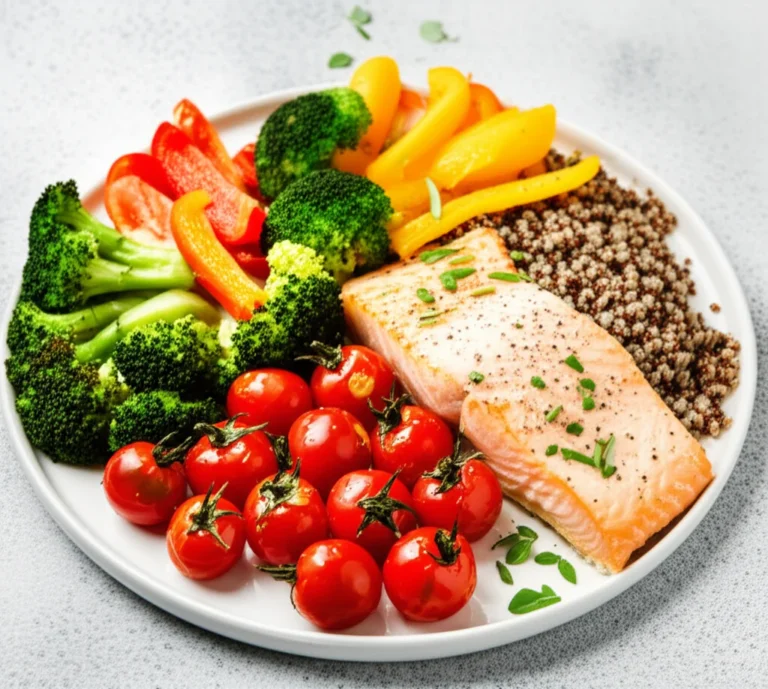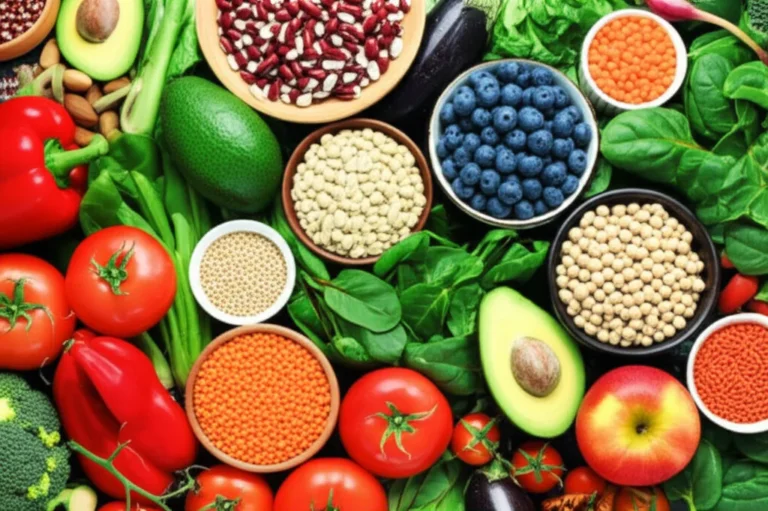Support our educational content for free when you buy through links on our site. Learn more
How Often Should You Eat Meat? 7 Essential Guidelines for 2025 🍽️
When it comes to meat consumption, the question isn’t just about how much you enjoy that juicy steak or crispy chicken—it’s about finding the right balance for your health and the planet. In a world where dietary choices can feel overwhelming, understanding how often you should eat meat is crucial for maintaining a healthy lifestyle. Did you know that the World Health Organization recommends limiting red and processed meat to reduce cancer risk? 🤯
In this article, we’ll explore seven essential guidelines to help you navigate your meat consumption effectively. From understanding the health implications of different types of meat to discovering delicious plant-based alternatives, we’ve got you covered. Whether you’re a die-hard carnivore or a curious flexitarian, these insights will empower you to make informed choices that align with your health goals and values.
Key Takeaways
- Moderation is Key: Limit red and processed meat to 1-2 servings per week to reduce health risks.
- Prioritize Quality: Choose lean cuts and consider organic or grass-fed options for better nutrition.
- Explore Alternatives: Incorporate plant-based proteins like beans, lentils, and tofu to balance your diet.
- Listen to Your Body: Pay attention to how different meats affect your health and adjust accordingly.
- Stay Informed: Keep up with dietary guidelines from reputable sources like the American Heart Association and World Cancer Research Fund.
Ready to make healthier choices? 👉 Shop Lean Meats on: Amazon | Walmart | Instacart and 👉 Shop Plant-Based Proteins on: Amazon | Walmart | Instacart.
Table of Contents
Quick Tips and Facts
Understanding Meat Consumption: A Historical Perspective
How Often Should You Eat Meat? Guidelines and Recommendations
The Impact of Meat on Your Health: What You Need to Know
Choosing the Right Types of Meat: Quality Over Quantity
Make Healthier Choices When Buying and Cooking Meat
Storing Meat Safely: Tips for Freshness and Safety
Exploring Meat Alternatives: A Flexitarian Approach
Balancing Meat in Your Diet: Tips for Flexitarian Living
More on Food Types: Understanding Different Meat Varieties
Support Links: Resources for Healthy Eating
Conclusion
Recommended Links
FAQ
Reference Links
Quick Tips and Facts
- Moderate Your Intake: Aim for no more than 70g of red and processed meat per day, and even less is better. Unlocking the Ultra Flexitarian Diet: 10 Surprising Benefits for 2025 🤯
- Choose Quality: Opt for lean cuts of meat and consider grass-fed and organic options when available. 🌱
- Prioritize Plant-Based Protein: Beans, lentils, tofu, and tempeh are excellent sources of protein and fiber. 💪
- Read Labels Carefully: Pay attention to sodium and saturated fat content in processed meats. 🧐
- Cook Safely: Ensure meat is cooked thoroughly to kill harmful bacteria. 🔥
Understanding Meat Consumption: A Historical Perspective
For centuries, meat has held a prominent place in many cultures’ diets. It’s been a symbol of prosperity, a source of essential nutrients, and a cornerstone of countless traditional dishes. However, the way we consume meat has changed drastically over time.
The Evolution of Meat Consumption
- Hunter-Gatherers: Our ancestors relied on hunting for meat, which was a scarce but valuable source of protein and fat. 🏹
- Agricultural Revolution: Domestication of animals led to a more predictable meat supply, but it was still consumed in moderation. 🌾
- Industrial Revolution: Mass production made meat more affordable and accessible, leading to increased consumption. 🏭
- Modern Day: We’re facing the consequences of excessive meat consumption, including health concerns and environmental impacts. 🌍
This historical context helps us understand how our relationship with meat has evolved and why finding a balanced approach to consumption is crucial today.
How Often Should You Eat Meat? Guidelines and Recommendations
Navigating the world of meat consumption can feel like walking a tightrope. On one hand, meat offers valuable nutrients like protein, iron, and vitamin B12. On the other hand, excessive intake, especially of red and processed meats, is linked to health risks. So, where’s the sweet spot? 🤔
Striking a Balance: Finding Your Meat-Eating Sweet Spot
- The American Heart Association recommends limiting red meat to no more than 1-2 servings per week. A serving is about 3 ounces cooked, or the size of a deck of cards. American Heart Association ❤️
- The World Cancer Research Fund goes a step further, suggesting a maximum of 3 portions of red meat per week (350-500g cooked weight) and minimal consumption of processed meats. World Cancer Research Fund
- Flexitarian Diet™ Perspective: We advocate for a personalized approach. Some individuals may thrive on a few meatless meals per week, while others might reduce their intake further. Listen to your body, consider your health goals, and consult with a healthcare professional for personalized guidance. 🩺
Factors Influencing Meat Consumption
- Health Conditions: Individuals with certain health conditions, such as heart disease or high cholesterol, may need to limit their intake further.
- Ethical Concerns: Animal welfare and environmental sustainability are important considerations for many people.
- Cultural Background: Food traditions and cultural norms often play a role in meat consumption patterns.
Remember, there’s no one-size-fits-all answer. The key is to find a sustainable and enjoyable way of eating that aligns with your values and supports your well-being.
The Impact of Meat on Your Health: What You Need to Know
Meat, particularly red and processed varieties, has been a hot topic in the nutrition world. Let’s break down the science and separate fact from fiction.
The Good, the Bad, and the Nutritious
- Nutrient Powerhouse: Meat is a good source of complete protein, providing all the essential amino acids your body needs. It’s also rich in iron, vitamin B12, zinc, and creatine. 💪
- Heart Health Concerns: High intake of saturated fat, found in many types of meat, can raise LDL (“bad”) cholesterol levels, increasing the risk of heart disease. 💔
- Cancer Risk: The World Health Organization classifies processed meats as carcinogenic (cancer-causing) and red meat as probably carcinogenic to humans. This is primarily linked to colorectal cancer.
- Other Health Implications: Some studies suggest a link between red meat consumption and an increased risk of type 2 diabetes, stroke, and other chronic diseases.
Moderation is Key: Tips for Healthy Meat Consumption
- Choose Lean Cuts: Opt for leaner cuts of meat, such as chicken breast, turkey breast, and pork loin.
- Limit Processed Meats: Sausages, bacon, hot dogs, and deli meats are often high in sodium and saturated fat. Enjoy them sparingly. 🌭
- Practice Safe Cooking Methods: Avoid charring meat at high temperatures, as this can form harmful compounds. Grilling, baking, and poaching are healthier options.
- Balance Your Plate: Make vegetables, fruits, whole grains, and plant-based protein sources the stars of your meals. 🥗
Choosing the Right Types of Meat: Quality Over Quantity
Not all meat is created equal. Understanding the differences between various types can help you make informed choices that align with your health goals.
Navigating the Meat Aisle: A Guide to Smart Choices
- Red Meat: This category includes beef, pork, lamb, and veal. While a good source of nutrients, it’s higher in saturated fat than other options. Choose lean cuts and enjoy in moderation.
- Poultry: Chicken and turkey, especially white meat without the skin, are lower in saturated fat and calories than red meat. 🐔
- Fish: A nutritional powerhouse, fish is packed with protein, omega-3 fatty acids, and vitamin D. Aim for at least two servings of fatty fish, like salmon or tuna, per week. 🐟
- Processed Meats: These include bacon, sausage, hot dogs, and deli meats. They’re often high in sodium, saturated fat, and preservatives. Limit their consumption.
Beyond the Cut: Factors to Consider
- Grass-Fed and Pasture-Raised: Animals raised on pasture tend to have meat that’s lower in saturated fat and higher in omega-3 fatty acids.
- Organic: Certified organic meat comes from animals raised without antibiotics or hormones.
- Sustainability: Consider the environmental impact of your food choices. Look for meat from farms that prioritize sustainable practices.
Make Healthier Choices When Buying and Cooking Meat
You’ve decided to enjoy some meat—great! Now, let’s ensure you’re making the healthiest choices from the store to your plate.
Shopping Smart: Navigating the Meat Aisle Like a Pro
- Read Labels: Don’t be swayed by packaging claims. Check the nutrition label for saturated fat, sodium, and added sugar content.
- Choose Lean Cuts: Look for cuts of meat with minimal visible fat. Ask your butcher for recommendations.
- Consider Portion Sizes: Meat packaging often contains more than one serving. Plan your meals accordingly to avoid overeating.
- Explore Alternatives: Ground meat dishes can often be made with plant-based alternatives like lentils or mushrooms. 🍄
Cooking Methods that Enhance Flavor and Nutrition
- Grilling: A delicious way to cook meat, but avoid charring, which can create harmful compounds.
- Baking: A versatile method that helps retain moisture. Place meat on a rack to allow fat to drip away.
- Poaching: A gentle cooking method that results in tender and flavorful meat.
- Stewing: A great option for tougher cuts of meat. Slow cooking breaks down connective tissue and enhances flavor.
Storing Meat Safely: Tips for Freshness and Safety
Proper storage is crucial for maintaining meat quality and preventing foodborne illness. Here’s how to keep your meat fresh and safe to eat:
Refrigeration: Keeping Meat Fresh and Safe
- Temperature Control: Your refrigerator should be set at 40°F (4°C) or below. ❄️
- Proper Wrapping: Store meat in airtight containers or wrap it tightly in plastic wrap or aluminum foil to prevent air exposure.
- Separate Raw Meat: Keep raw meat separate from other foods, especially ready-to-eat items, to avoid cross-contamination.
- Storage Duration: Refrigerate fresh meat within two hours of purchase. Use ground meat within 1-2 days and whole cuts within 3-5 days.
Freezing for Long-Term Storage
- Wrap It Tight: Wrap meat tightly in heavy-duty freezer wrap, freezer bags, or aluminum foil to prevent freezer burn.
- Label and Date: Always label meat with the type and date frozen for easy identification.
- Thawing Safely: Thaw frozen meat in the refrigerator, in cold water (changing the water every 30 minutes), or in the microwave. Never thaw meat at room temperature.
Exploring Meat Alternatives: A Flexitarian Approach
One of the cornerstones of a flexitarian lifestyle is embracing delicious and nutritious meat alternatives. Let’s dive into the world of plant-based proteins and discover how they can enhance your meals and support your health goals.
Plant-Based Powerhouses: Delicious and Nutritious Options
- Legumes: Lentils, beans, and chickpeas are nutritional powerhouses, packed with protein, fiber, and essential nutrients. They’re incredibly versatile and can be used in soups, stews, salads, and more. 🫘
- Tofu: Made from soybeans, tofu is a complete protein source that readily absorbs flavors. It’s a staple in many Asian cuisines and can be stir-fried, baked, or crumbled into dishes.
- Tempeh: Another soy-based protein source, tempeh has a firmer texture and nuttier flavor than tofu. It’s a good source of prebiotics, which support gut health.
- Seitan: Made from wheat gluten, seitan has a meaty texture and is often used in vegetarian dishes that mimic the texture of meat, such as “chicken” strips or “beef” tips.
- Mushrooms: With their savory flavor and meaty texture, mushrooms make a satisfying addition to countless dishes. They’re low in calories and a good source of B vitamins and selenium. 🍄
Benefits of Incorporating Meat Alternatives
- Increased Fiber Intake: Plant-based proteins are naturally rich in fiber, which promotes digestive health, helps regulate blood sugar levels, and may contribute to weight management.
- Reduced Saturated Fat Consumption: Swapping out some meat for plant-based alternatives can help lower your intake of saturated fat, which is beneficial for heart health.
- Environmental Sustainability: Plant-based protein sources generally have a lower environmental impact than animal products, requiring less land, water, and energy to produce.
Balancing Meat in Your Diet: Tips for Flexitarian Living
Living a flexitarian lifestyle is all about finding a sustainable balance that works for you. It’s not about strict rules or deprivation but rather about enjoying the best of both worlds—savoring meat in moderation while embracing plant-based meals.
Practical Tips for Incorporating Flexitarianism into Your Life
- Start Gradually: Begin by designating one or two days a week as meatless. As you become more comfortable, you can gradually increase the number of plant-based meals you enjoy.
- Plan Your Meals: Meal planning is key to flexitarian success. Having a plan in place helps you make healthy choices and avoid impulsive decisions.
- Experiment with Recipes: Don’t be afraid to get creative in the kitchen! There are countless delicious and satisfying flexitarian recipes available online and in cookbooks.
- Make It a Family Affair: Get your family involved in trying new plant-based meals. You might be surprised at how much they enjoy them!
- Listen to Your Body: Pay attention to how your body feels when you eat meat and when you eat plant-based meals. Adjust your intake accordingly.
Benefits of a Flexitarian Lifestyle
- Improved Health: Studies have linked flexitarian diets to a lower risk of heart disease, type 2 diabetes, certain types of cancer, and obesity.
- Environmental Sustainability: Reducing meat consumption can lessen your environmental footprint.
- Increased Food Variety: Embracing a flexitarian approach encourages you to explore new foods and flavors.
- Sustainable Lifestyle Change: Flexitarianism is a flexible and adaptable way of eating that can be tailored to your individual needs and preferences.
More on Food Types: Understanding Different Meat Varieties
Let’s delve deeper into the world of meat, exploring the unique characteristics and nutritional profiles of different varieties.
Red Meat: Navigating the Cuts and Considerations
- Beef: A staple in many cuisines, beef offers a rich source of protein, iron, and vitamin B12. Choose lean cuts like sirloin, tenderloin, and round steak.
- Popular Cuts: Ribeye, New York Strip, Filet Mignon, Ground Beef
- Pork: Often considered “the other white meat,” pork is surprisingly versatile. Opt for lean cuts like pork loin, tenderloin, and Canadian bacon.
- Popular Cuts: Pork Chops, Pork Tenderloin, Bacon, Sausage
- Lamb: Known for its distinctive flavor, lamb is a good source of protein, iron, and zinc. Choose leaner cuts like leg of lamb and loin chops.
- Popular Cuts: Leg of Lamb, Lamb Chops, Ground Lamb
- Veal: Meat from young calves, veal is known for its tender texture and delicate flavor. It’s a good source of protein, iron, and vitamin B12.
- Popular Cuts: Veal Cutlets, Veal Chops, Ground Veal
Poultry: From Chicken to Turkey and Beyond
- Chicken: A lean and affordable protein source, chicken is incredibly versatile. Choose skinless chicken breast or thighs for a lower-fat option.
- Popular Cuts: Chicken Breast, Chicken Thighs, Chicken Wings, Whole Chicken
- Turkey: A larger bird than chicken, turkey is often enjoyed roasted whole. It’s a good source of protein, niacin, and selenium.
- Popular Cuts: Turkey Breast, Turkey Legs, Ground Turkey
Fish and Seafood: Embracing Omega-3 Powerhouses
- Fatty Fish: Salmon, tuna, mackerel, and sardines are rich in omega-3 fatty acids, which are beneficial for heart, brain, and eye health.
- White Fish: Cod, haddock, tilapia, and halibut are milder in flavor and lower in fat than fatty fish. They’re a good source of protein and low in mercury.
- Shellfish: Shrimp, crab, lobster, and mussels offer a unique flavor and texture. They’re a good source of protein, zinc, and selenium.
Support Links: Resources for Healthy Eating
Here are some valuable resources to support your journey toward a healthier relationship with meat and a more balanced diet:
- The Flexitarian Diet™: https://www.flexitariandiet.org/ – Explore our website for more information on flexitarian living, recipes, and tips.
- American Heart Association: https://www.heart.org/ – Find reliable information on heart-healthy eating and recipes.
- World Cancer Research Fund: https://www.wcrf.org/ – Learn about the link between diet and cancer risk, and access evidence-based recommendations.
- Dietary Guidelines for Americans: https://www.dietaryguidelines.gov/ – Access the latest dietary recommendations from the U.S. Department of Agriculture and the Department of Health and Human Services.
Conclusion

In summary, the question of how often you should eat meat is nuanced and deeply personal. Moderation is key! While meat can be a valuable source of protein and essential nutrients, excessive consumption—especially of red and processed meats—can lead to health risks. By following guidelines from reputable sources like the American Heart Association and the World Cancer Research Fund, you can strike a balance that supports your health and aligns with your lifestyle.
Positives of a Balanced Meat Consumption:
- Provides essential nutrients like protein, iron, and vitamin B12.
- Can be part of a healthy, varied diet when consumed in moderation.
Negatives of Excessive Meat Consumption:
- Increased risk of chronic diseases, including heart disease and certain cancers.
- Environmental concerns related to meat production.
We confidently recommend adopting a flexitarian approach, where you enjoy meat in moderation while incorporating a variety of plant-based proteins into your meals. This not only supports your health but also contributes to a more sustainable planet. 🌍
Recommended Links
- 👉 Shop Lean Meats on: Amazon | Walmart | Instacart
- 👉 Shop Plant-Based Proteins on: Amazon | Walmart | Instacart
- Books on Flexitarian Diet: The Flexitarian Diet | The Plant-Based Diet
FAQ

Is eating meat once a day too much?
Eating meat once a day can be acceptable for many people, especially if you choose lean cuts and balance your diet with plenty of fruits, vegetables, and whole grains. However, if you’re consuming large portions or processed meats, it may be wise to cut back. The key is to monitor how your body responds and adjust accordingly.
What are the health benefits of reducing meat consumption?
Reducing meat consumption can lead to several health benefits, including:
- Lower cholesterol levels: Plant-based diets are typically lower in saturated fats.
- Reduced risk of chronic diseases: Studies show that lower meat intake is associated with a reduced risk of heart disease, type 2 diabetes, and certain cancers.
- Improved digestion: A diet rich in fruits, vegetables, and whole grains promotes better digestive health due to increased fiber intake.
Read more about “What Do You Eat in the Flexitarian Diet? 10 Delicious Ideas! 🥗 …”
How can I get enough protein on a mostly vegetarian diet?
You can easily meet your protein needs on a mostly vegetarian diet by incorporating:
- Legumes: Beans, lentils, and chickpeas are excellent sources of protein.
- Nuts and seeds: Almonds, chia seeds, and hemp seeds add protein and healthy fats.
- Dairy and eggs: If you include these in your diet, they provide high-quality protein.
- Whole grains: Quinoa, farro, and brown rice also contribute to your protein intake.
Read more about “Unlocking the Ultra Flexitarian Diet: 10 Surprising Benefits for 2025 🌱”
What are the environmental impacts of eating meat?
Meat production has significant environmental impacts, including:
- Greenhouse gas emissions: Livestock farming contributes to about 14% of global greenhouse gas emissions.
- Land use: Raising animals requires large amounts of land for grazing and growing feed crops, leading to deforestation and habitat loss.
- Water usage: Meat production is water-intensive, requiring significant resources for animal husbandry and feed crops.
Read more about “How Often Do Flexitarians Eat Meat? Discover 7 Surprising Insights! 🍽️”
How does the type of meat affect how often I should eat it?
Different types of meat have varying health implications:
- Red meat: Limit to 1-2 servings per week due to its association with chronic diseases.
- Processed meat: Should be consumed sparingly, as it’s linked to higher cancer risks.
- Poultry and fish: Generally healthier options; moderate consumption is acceptable.
What are some healthy alternatives to meat for protein and iron?
Consider these alternatives:
- Legumes: Lentils and beans are rich in protein and iron.
- Tofu and tempeh: Great sources of protein and can be used in various dishes.
- Quinoa: A complete protein that also provides iron.
- Nuts and seeds: Almonds and pumpkin seeds are good sources of both protein and iron.




